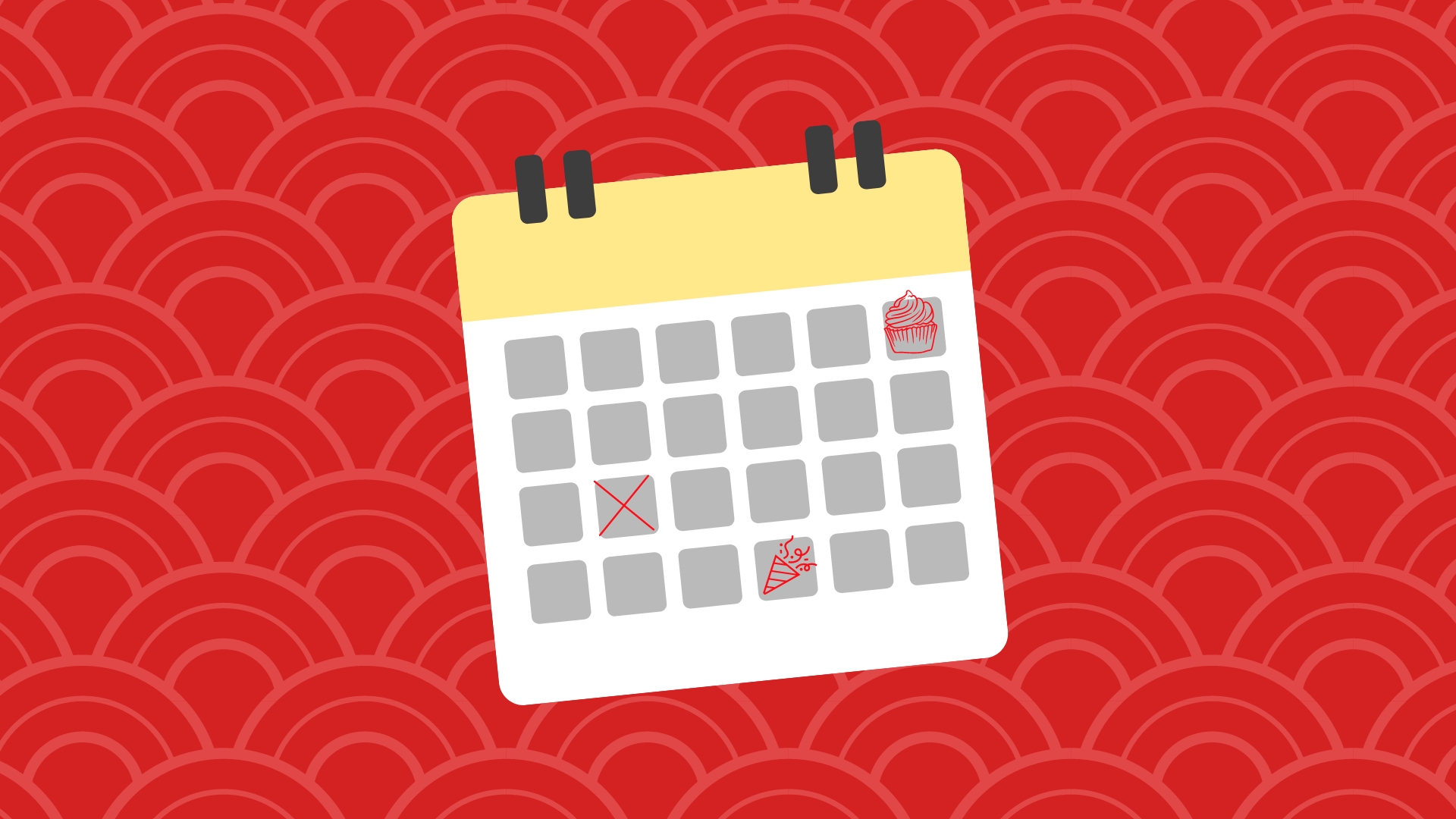Marketers, content creators, and communication professionals often wonder “How can I keep creating interesting, engaging, and relevant content that will appeal to my target audience”
Content creation for new and relevant content is a daunting task, even if you’re working with a good team of writers and social media experts. A Content Calendar may be the solution to this problem.
Whilst businesses can be motivated to create and share content, time is scarce and human resources can be limited, especially if content creation is handled in-house as opposed to being outsourced.
Most of the time, it’s not a question of available resources that’s the root of these content problems, but inefficient use of them due to poor planning.
A content calendar is an effective tool to make the most of the resources available by coordinating content creation and dividing the workload into an easily-manageable calendar. You’ll spend less time wondering what to write and focus almost entirely on the creation of the content itself.
Top Ten Tips For Making An Effective Content Calendar
Clarify your goals
When creating your content calendar by planning out what you want to include, you should always ask yourself “What’s the main goal of this content?”. If you know the answer to this question, then you can use it to determine the aim of the content, the channel, and the format.
For instance, is it a brand awareness campaign about a new product launch, are you wanting to drive traffic to a link, or just increase your online presence with new subscribers?
The goals you set will have a significant impact on where, and how often content is published. So your team should have clarity of the goals prior to and during the content planning sessions.
Making the goals known should always be the first step when incorporating a content calendar into a team’s workload, content without a purpose or goal will only be a detriment.
Creating or using a good template
There are plenty of tools that offer calendar features on the web such as Outlook Online or Google Calendars, but if the software is unfamiliar to the company, then it can be a waste of time. A content calendar can be in a simple spreadsheet.
Ensure the calendar can be shared with your team if the content creation is a collaborative effort. For instance, Google Sheets would allow you to make a shareable spreadsheet where anyone invited could edit the sheet on their own computer to add comments and ideas, and these changes would show up in real-time.
A content calendar should always include the following:
- The channel where the content will be posted
- The topic and type of content
- When the content will be published
- Who’s in charge of the content
- Has the content been published
There are also plenty of free online templates to use that can be modified to your likings such as Hootsuite’s Social Media Content Calendar Template
Choosing correct channels
You’ll need to find out which channels your target audiences are using, and which ones your prospective audiences are using too. Knowing these channels will allow you to understand what kind of content your team should be creating. Should you be making Reels for Instagram? An FAQ video for YouTube? or be capitalising on the latest trend for TikTok?
Whilst publishing content on different platforms and using various formats can be beneficial, due to the fact your audito broadened, ensure that there are sufficient resources in order to focus on the platforms you wish to be visible on. Most importantly, pick vital channels and focus on high-quality content creation, rather than just posting on every platform.
A social media post is fairly easy to create, but ensure that your content calendar uses a variety of content, and isn’t just social media posts.
You should look at including press releases, articles, and blogs in the marketing plan and content calendar, as they are beneficial to target audiences as well as beneficial for your website as they’ll help with SEO. Social media can also be utilised to promote and share in-depth content like these examples.
Begin with the calendar year
Whilst it sounds obvious, you should use the calendar year as a basis for when you plan. Take holidays such as Easter. Halloween, and Christmas into account, or plan to promote a Black Friday sale on the black Friday weekend. This step will help determine the types of seasonal content you want your team to create, and will also give an idea of the upcoming workload. You can also incorporate webinars, events, training, and events into the calendar.
Use your own content
Now you have your important dates, you look at incorporating content ideas. Here are some examples of content you can use:
- Theme posts
- Serial posts
- Blogs and articles
- Information about new products or services
- Company achievements i.e. new staff hires, promotions, etc…
- Seasonal greetings
- Company news
- Photos from events i.e. visiting a school
- Stakeholder stories or interviews
Remember evergreen content
Evergreen content can be defined as content that’s not tied to a certain date or time, such as content with contemporary themes. Evergreen content is useful to not only your organisation but to audiences too. Contemporary themes will always be relevant as well as searched for online, so evergreen content is reliable in getting you clicks, even after a “buzz” from the initial publishing date is over.
You can also introduce these contemporary articles to new ones through internal links.
Timeless content will save you time when schedules are delayed because it can be created and published at any time, you should ideally keep evergreen content in your back pocket, ready to use if the need arises in the instance that the team needs to focus on other projects.
Reuse prior content
When thinking about what content to use, it doesn’t always need to be “new”. A majority of businesses will have useful content that’s just not been utilised yet, for instance, CRM system data or customer survey results.
One smart idea is to take an old blog post and upcycle it by turning it into a short video. Prospective customers may seek information on differing platforms, so it’s always a good idea to visit the same ideas of old content, but in a new format. This technique will allow your beneficial content to reach new audiences.
Also, make sure your website and content are kept up to date and accurate, so that if anyone’s reading an old article, it still looks professional.
Think about content frequency
You’ll have to think about because can realistically be created and published, due to the fact that creating content can be time-consuming, so think about what works for you. It’s vital that you understand your team’s boundaries so the content calendar can be at its most efficient.
If the calendar is too full and there’s too much pressure on publishing content, then the actual content will suffer. However, this doesn’t mean there should be too little content, there should be enough content to create website traffic and provide benefits to users.
It sounds obvious, but the content calendar you create will allow you to see when you’ll be really busy, and plan ahead, which will assist individuals, as well as the team. A content calendar will allow the team to ready themselves for the most active months by ensuring that content has been created well before the publishing date.
There should also be an element of flexibility with the content calendar, it shouldn’t just be set in stone. Content may need to be moved around, or new ideas could be added.
Keep the calendar updated
I can’t tell you how long in advance you should plan your content for, because planning ahead relies on numerous factors, which can include how volatile your industry is we well as company-dependent factors.
Bear in mind that the further ahead you plan your content, the more the flow of content will feel natural and uninterrupted. A straightforward guideline or use to use is:
Plan your valuable and primary content for the whole year, aftewards plan weekly and daily content in more detail for the following month.
You should also take reviews of the content calendar and plan in team meetings, just to discuss ideas, thoughts, and feelings to stay on track.
Analyse content engagement
Lastly, the most important tip is to assess your content!
The greatest aspect of digital marketing compared to the marketing of yore is that almost everything can be measured.
Spend some time examining your own content and data, so that you can see what worked and what didn’t work. See which social media posts have generated conversation, which blog posts were shared, or how visible a new press release was.
If you know what your audiences engage with, it will allow you to evolve your content to create even more interesting and engaging content for the future.
Thank you for taking the time to read this guide, if you have any more questions then please feel free to get in touch with Intelligency to see how we can assist with your content further.






